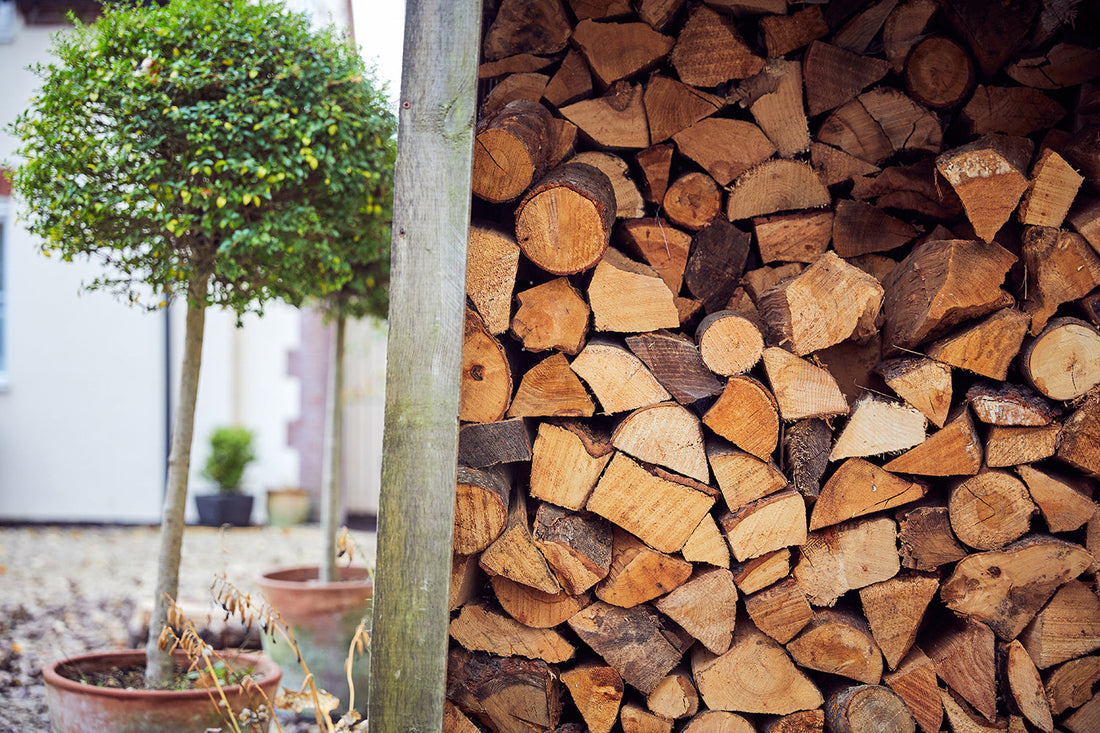
Do Kiln Dried Logs Burn Too Quickly?
Share
What are kiln dried logs?
Firstly, what constitutes a kiln dried log, and what does it actually mean? It has no official meaning but just means that it has been dried in a kiln rather than air dried naturally. A kiln is generally a large room supplied with hot air blown around the chamber to dry the wood.
Here at Certainly Wood, we have been kiln drying our firewood for nearly twenty years and confidently claim that we actually pioneered the process. When we developed our unique wood-fired kilns, which are forty-foot containers, no one had ever heard of kiln dried firewood – there was no such thing.
How does Certainly Wood process its firewood?
All our firewood is first processed into logs which average 25cm in length and 5-15cm (2-6 inches) in diameter. The wet wood is then stored in wooden bins for 3-4 weeks to start the drying process before being placed into the kilns for approx. 40-50 hours to dry the logs down to below 20% moisture content, although often nearer 10-15%. Splitting the unseasoned wood into small logs is key to the whole drying process; it allows the log to start drying and the water to migrate from the centre of the log to the outside and evaporate. This ensures they meet the Woodsure Ready to Burn accreditation standard laid down by the government in 2021, which guarantees the firewood is below 20%. Find more about the process here.



Does the term kiln dried logs guarantee the logs are ‘ready to burn’?
When purchasing kiln dried firewood, firstly, make sure you are buying hardwood logs as they burn for much longer than softwood logs. Over the last five years, as kiln dried logs have become better known, more and more suppliers have realized that selling ‘seasoned’ or ‘unseasoned firewood’ is not the thing to do anymore. Customers want to be able to buy the good quality now and not necessarily have to ‘season’ their own, which of course takes up so much space if stored and air-dried over 2-3 years. Just be wary, though, that just because logs are sold as ‘kiln dried’ does not guarantee the quality, and the logs are below 20% moisture content. All it says is that the logs have been placed in a kiln with warm air circulating the chamber. The quality will undoubtedly be better than wet wood, but do you know it's dry?
It would help if you bought your own moisture meter to measure the moisture content; ideally, you should split the log down the middle and measure across the grain. This should read below 20%, but to be honest, if it’s up to 25%, but the outside of the log is 10-15%, the average will still be below 20%. Hopefully, the real guarantee of the logs being below 20% is if the supplier and/or the product carries the Woodsure ‘Ready to Burn’ logo. If not, be very wary about buying ‘kiln dried logs.’
Are kiln dried logs easier to burn?
Kiln dried logs are easy to manage and not only make fire lighting easy but also provide a clean burn with very little smoke and maximum heat output. They genuinely offer the most efficient burn for any log fire, but do they burn too quickly?

Do modern wood-burning stoves mean a slower burn?
Simply, if used correctly and burnt in an efficient wood-burning stove, the answer is no. Modern Ecodesign stoves ensure the combustion of the wood is optimized, and indeed modern stoves must have dry wood; otherwise, they just won’t operate efficiently. It is a bit of a myth to think that logs with a higher moisture content will burn more slowly.
To be honest, they will not burn efficiently as all the energy is being used to burn off the water, and lots of smoke will be produced. They, therefore, give off very little heat and consequently, you need up to twice as many logs to produce the same heat – that is not good. The critical point is the efficient stove for the optimum slow burn of kiln dried logs. Having recently updated my stove to a new Ecodesign stove, I actually use about 20% fewer logs – far more efficient than my old stove.
Don’t logs burn faster in an open fire?
Now, if you are burning kiln dried logs in an open fire or outside on a firepit or pizza oven, where you have no control over the airflow, then yes, kiln dried logs will burn slightly faster than logs with a higher moisture content (20-30% moisture content). Still, if you use the latter, they will produce more smoke which is not suitable for you or the environment, and you will get very little heat for cooking or sitting around and keeping warm.
It’s all about the heat output – more heat means fewer logs. Also, just bear in mind that burning firewood on a stove or open fire that is not dried to below 20% moisture content means you have far more particulates (tiny smoke particles) going up the chimney and into the atmosphere and condensing on the way up to form soot and ultimately tar in the flue or chimney – Not good.
Why is it not good to mix wet logs with kiln dried logs?
The open fire scenario reminds me of a local friend, who sadly isn’t with us anymore, but he always used to tell me that he wouldn’t burn our kiln dried wood as they were just too dry and not only burnt too fast but were too pricey for him. A year later, we met again, and he told me he had just had a chimney fire the previous day.
It wasn’t long before he realized that the reason was simply that he had been burning wet wood that would have burnt slowly, with very little heat, but sent vast amounts of smoke up the chimney, condensed on the way up, formed soot which will have built up over time to form creosote and tar – that is what causes a chimney fire! Lesson learnt I feel, and ever since, he always bought kiln dried logs from us, not the seasoned logs we used to sell.
I have also had several people tell me that they like to mix some wetter logs in with our kiln dried logs to slow the burndown! People need to get their heads around the fact that kiln dried logs don’t burn too quickly. It is entirely false economy to think you can save money by buying unseasoned wet logs unless you are drying them yourself.
Why do imported kiln dried logs often burn faster?

Explore our kiln dried logs here.
